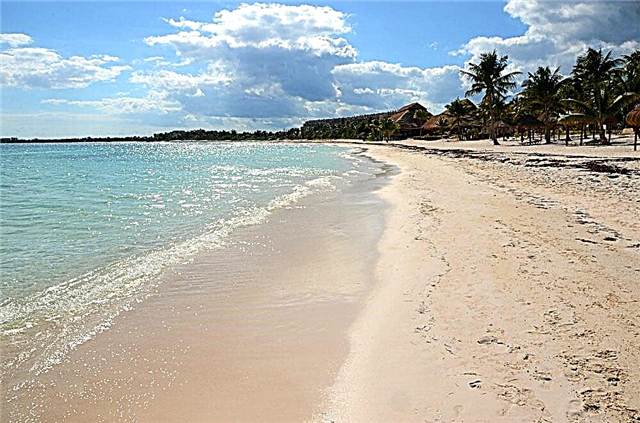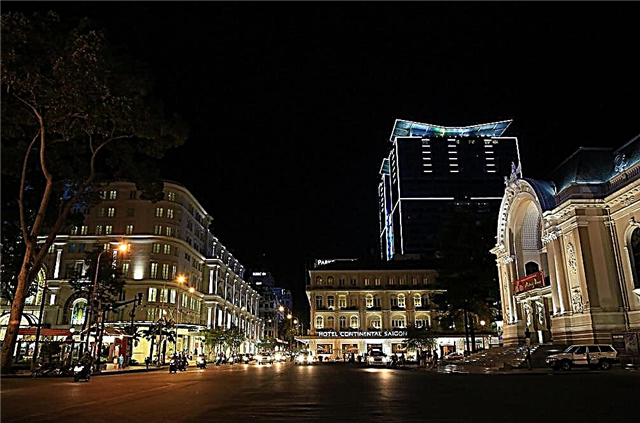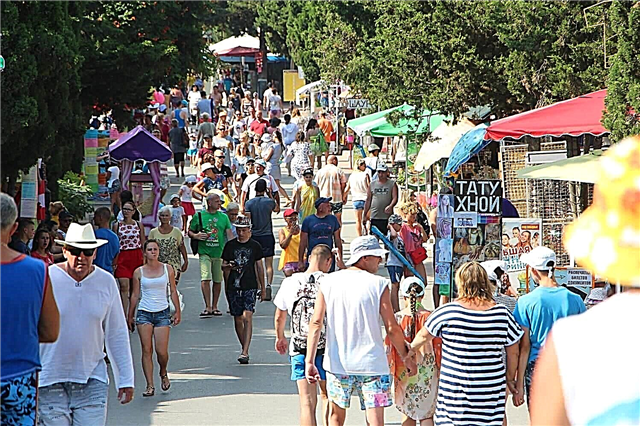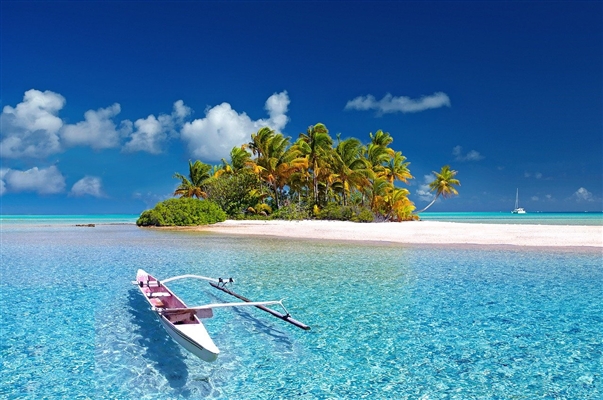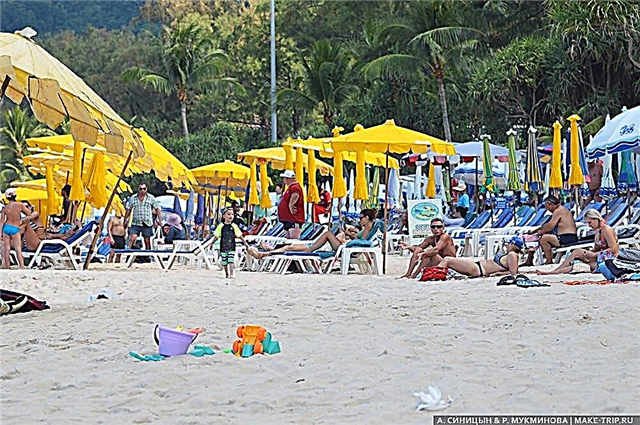The main treasures of Dagestan are nature and the auls that have preserved the traditions of their ancestors. The mountainous terrain is rich in amazing objects, be it a natural bridge or an underground waterfall. Spectacular views are found everywhere in the republic, since there are many islands of untouched nature left. As for the settlements, they honor history and continue to engage in folk crafts.
Some auls have a specialization, for example, making and painting ceramic dishes. It can be purchased in stores, and especially valuable exhibits can be viewed in museums in large cities. Although most of the population is Muslim, representatives of other religions also have a place to pray, and at the same time appreciate the beauty and safety of old churches and temples.
The most interesting and beautiful places in Dagestan
What to see and where to go? List of the best objects of tourism and active recreation!
Naryn-Kala fortress
The citadel of the 8th-16th centuries was built in Derbent. Built on a hill, as close as possible to the Caspian Sea. Its direct purpose is to block the narrow coastal passage into the land of the Persians. The area is about 4.5 hectares. It has an irregular shape. Each new ruler added something to the appearance of the fortress. Many buildings have survived inside the perimeter, including the baths. It is a UNESCO World Heritage Site.

Kubachi
A village in the Dakhadayevsky district, first mentioned in chronicles in the 5th century. Since ancient times, it has been known for its craftsmen, including chain mail manufacturers. Now they are engaged in wood and stone carving, but metal products attract more tourists' attention. Weapons, military armor in the old manner, household items - all this can be found in Kubachi. There is an art combine, and with it - a museum.

Kezenoy-Am
Lake formed due to the blockage of a part of the river. Refers not only to the territory of Dagestan, but also to Chechnya. The water level fluctuates depending on the season, so the surface area is unstable: from 170 to 230 hectares. In 2015, a multidisciplinary tourist cluster was opened: cottages, a sports complex, a bathhouse, a boat station, etc. Since 2017, a sailing regatta has been held. Regional natural monument.

Chirkeyskaya HPP
Commissioned in the mid 70s of the last century. Built on the Sulak River, it is the most powerful hydroelectric power plant in the North Caucasus, and the first in the country in terms of height among the arched ones. It forms a reservoir in the Chirkei Gorge. A road runs along it to the dam. A fish farm has been established at the station, which specializes in raising trout.

Derbent Juma Mosque
It is considered the oldest not only in Russia, but also in the CIS. Built in the 8th century. It was repeatedly built on and changed outwardly, including in the XIV century it was restored after an earthquake. A prison was based in the mosque for several years, but already in 1943 it was returned to the believers. In the courtyard there are 4 perennial plane trees, recognized as a natural monument. They are visible from many points of the city.

Durk cave
The entrance to it can be found on the cliff of Darkdag Mountain. There is another name - Khrustilskaya (due to the proximity of the village of the same name). There are seven halls in the cave, but access to five is blocked by rubble. The remaining two have electricity, they are on top of each other and connected by a wooden staircase. It is believed that the sword of Maslama, a commander from the Arab world who preached Islam, was kept in Durk.

Dagestan reserve
Occupies an area of 19 thousand hectares of two districts of the republic at once: Tarumovsky and Buinaksky. Founded in 1987 with the aim of protecting the migratory routes of birds from human influence. This is especially true of the Kizlyar Bay. The most protected and rare species: flamingos and pelicans (pink and curly). The air and water temperatures are traditionally above zero, which has a beneficial effect on vegetation.

Dune Sary-kum
One of the highest on the planet. Location - the vicinity of Makhachkala. The height is about 250 m. The shape and size are considered to be changing due to the winds blowing and bringing layers. Its exact age is unknown, but it is estimated at hundreds of thousands of years. Many legends and myths are associated with the dune - a piece of the desert. One of them says that the epic giant shook out so much sand from his shoes.

Sulak canyon
Belongs to the valley of the Sulak River. The length is about 53 km. The depth is approaching 2 thousand m, which makes the canyon the second largest in the world. People come here for fishing, especially many people who like to sit with a fishing rod in the vicinity of the Chirkei reservoir. You can explore the canyon by boat trip. And climbers with the appropriate equipment descend to the very bottom of the canyon.

Kala Koreish
A village and a fortress at the same time. It is believed that it was built by the tribe in which the prophet Muhammad was born. The location on the top of the mountain in the Dakhadayevsky district was strategically very convenient and remains so in our time. There are several mountain rivers in the area, and their channels are an additional obstacle for intruders. Near the ancient cemetery and the ruins of a caravanserai.

Karadakh gorge
It has many names, including the "Gate of Miracles". The width of the canyon varies from 2 to 5 m, the length is 400 m, and the height of the walls is approximately 170 m. A gorge appeared due to the Kvartakh river, which undermined the rock unstable to erosion and created such a unique natural monument. On the way to the canyon, there are observation platforms, and at the exit there are small bridges built in the nineteenth century.

Shalbuzdag
Summit in the Caucasus mountain system. The height above sea level is more than 4 thousand m. Small rivers originate on its slopes. The snow cover is partial, since there are not many eternal snows in Dagestan in principle. Therefore, glaciers are found only less than a kilometer before the peak. It belongs to the number of sacred mountains and is actively visited by pilgrims. There are especially many people here from mid to late summer.

Tobot waterfall
Located near the village of Arani. The gorge, from the top of which a narrow stream of water falls with a roar, forms the Latin letter "V". There is no consensus about the height of the waterfall: researchers call the numbers from 50 to 100 m. Below the water quickly leaves, without forming natural baths. But on sunny days, the rocks shimmer from splashes and refraction of light in different colors. Attractions nearby: Khunzakh Fortress.

Samur forest
It grows in the Magaramkent region. It is partly the property of Azerbaijan. The Russian section is part of the Samur State Nature Reserve. The area is over 11 thousand hectares. It borders on the Caspian Sea. The massif consists of relict temperate subtropical trees. Rare species: nut-bearing lotus, ophrises, Mediterranean turtle, white-tailed eagle and others.

Gamsutl
Abandoned village in the Gunibsky district. In the past, there was a school, hospital and other municipal facilities. Electric poles are inactive, and the road ends a kilometer before the houses. Most of the buildings are uninhabitable. The color of the brickwork is almost the same as the color of the rocks, so the buildings appear to be embedded in the mountain. The last permanent resident died in 2015.

Church of St. Grigoris
Built in Nyugdi in 1916 in honor of the martyrdom of a Christian enlightener. Belongs to the Armenian Apostolic Church. Back in Soviet times, the building was recognized as a historical monument, but no one looked after the values, and they were stolen. In the XXI, the restoration of the interior decoration, lost over the years of desolation, began. Since 2011, services have been held on an ongoing basis.

Saltinsky waterfall
Location - Salta village. The only underground waterfall in the republic.The Saltinka River goes underground near the village and falls from a height of 20 meters even lower into a rift. Thanks to the smooth walls of the canyon and constant moisture, light is reflected here many times and colors the water in different shades. In rainy weather, the flow is especially strong. At the bottom you can find bones - the remains of animals falling through the crack.

Balkhar
A sparsely populated village in the Akushinsky district. Gained fame because of the local handicrafts. For the most part, craftsmen are engaged in the manufacture of works of art and household items from ceramics. The residents specialize in decorations, vases, and dishes. There are also special ways to paint them. In addition, you can buy hand-woven carpets and children's toys made in different techniques.

Choh
Aul in the Gunibsky district. The area has been inhabited since ancient times. A Neolithic site and the remains of a settlement dating back to 6000 BC were discovered nearby. It is believed that here one of the first in the region began to engage in agriculture. Despite its modest size, the aul is the birthplace of many prominent thinkers, scientists and athletes. Every year, the village day is celebrated on a grand scale, as well as religious holidays.

Central Juma Mosque in Makhachkala
The main mosque of the capital of Dagestan. During its construction, they were guided by the plan of the Blue Mosque, located in Istanbul, and the project was sponsored by Turkish Muslims. It began receiving believers in 1997, and in 2007 the premises were expanded to accommodate more parishioners at the same time. The green carpet has a special pattern - markings for the convenience of worshipers. Quranic sayings are written on the walls.

Agrakhan reserve
It was founded in 1983 on the territory of the Kizlyar, Babayurtovsky and Kirovsky districts and covers an area of 39 thousand hectares. Since the area belongs to the Terek Delta, the local ecosystem is unique: high humidity affected the growth of aquatic and semi-aquatic plants. The protection of the territory should help the populations to recover: for decades, animals, fish and birds have been exterminated by poachers.

Akhulgo
Belongs to the Untsukul district. The translation of the name is “mountain of call”. The memorial is dedicated to the events of the Caucasian War, especially the assault in 1839. It opened in 2017 on the top of the mountain of the same name, on the site of the former fortress. There is a museum that tells the history of battles, about the feat of peoples and the biography of Imam Shamil. Among other things, pilgrims visit the area, remembering the dead mountaineers.

Tlyaratinsky reserve
It is part of the Dagestan nature reserve. The current status was assigned to an area of more than 83 thousand hectares in 1986. The staff of the reserve is closely monitoring the recovery of populations of both carnivores and herbivores. Tourists should have a passport with them, as there is a border nearby. Attraction nearby: reservoirs, distinguished by the emerald hue of the water surface, called the "Plateau of Falling Lakes".

Kuzhniki Natural Bridge
The natural arch is located in the Tabasaran region. The height is about 50 m, the width is about 6 m, the length of the “overlap” is about 100 m. The location above the gorge makes the views from here very spectacular. This territory is located in a nature conservation area, and the bridge itself is a natural monument of local importance. In addition, for residents of nearby villages, the arch is sacred, so you need to behave nearby in an appropriate manner.

Dagestan Museum of Fine Arts
Founded in 1958 and currently bears the name of P.S. Gamzatova, under whose management he blossomed and gained fame in the Union. Initially, it was disconnected from the local history museum. Part of the collection came from the capital, part - from private collections. In addition to paintings, the funds consist of objects of decorative and applied art. The museum has a lecture hall, a small cinema and a souvenir shop.

Museum of Carpet and Arts and Crafts
Opened in Derbent in 1982. Occupies the building of an old Armenian church. In addition to carpets, the collection also includes other local crafts, such as ceramic, copper, silver, wood or iron. The exposures differ accordingly. But the excursion is most often carried out throughout the museum, since the funds are not very large. The exhibits were brought from different auls of the republic.

Fortress of seven brothers and one sister
Built in the 7th-8th centuries near the village of Khuchni on a hill above the gorge. Looks higher from the outside. This is due to the fact that it was originally built as a two-story, but the first floor is now almost completely covered with earth. The thickness of the walls and their inviolability are impressive. Not only the masonry has survived, but also the loopholes. The name is associated with a legend about a sister who betrayed the heroic brothers who defended their native lands.

Holy Dormition Cathedral in Makhachkala
The only Orthodox church in the city. Built in the early years of the last century. After the revolution it was closed, but already in the 40s the services were resumed. In 2004, the cathedral was mutely expanded, adding a chapel named after Alexander Nevsky. Although the number of parishioners decreased due to the outflow of Orthodox Christians from the republic, it was decided to re-paint the walls, update the iconostasis and refine the area around.

Monument to the "Russian teacher"
The name is unofficial, the memorial is dedicated to the representatives of the Russian people who came to Dagestan and devoted their lives to the development of the republic. Installed in 2006 in Makhachkala. A wide, low staircase leads to a platform with a 10-meter monument (a female figure with a book in one hand and resting on a globe with the other hand). Impressive beams closed over it with a pyramid.

Gunib fortress
It is located not far from the village of the same name. The exact time of construction is unknown, but the most important events in the history of the fortress fall on the period of the Caucasian War. Russian troops took it in 1859. The last stronghold of Shamil. Later, the gunners began to lodge here. At present, only ruins and a part of the wall, which looks colorful and impressive, remain. The masonry breaks off near the abyss.


